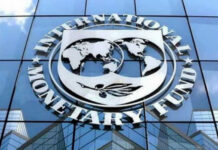
Government borrowing from the banking sector has seen a rapid surge this fiscal year mainly due to the lower investment of general people and firms in national savings tools, a development that may crowd out the private sector.
The government took loans to the tune of Tk 22,344 crore from banks between July 1 and December 14, data from the Bangladesh Bank showed. It borrowed Tk 26,078 crore last fiscal year.
Although the accelerated borrowing is yet to put any adverse impact on the private sector, this may bring about a credit crunch in the banking sector in the coming months if the current trend of public borrowing persists.
The government has set a bank borrowing target of Tk 76,452 crore for the current fiscal year.
The higher public borrowing is largely the result of individual investors and companies moving away from national savings instruments after the finance ministry cut the interest rate on savings certificates and wage-earner bonds by 1 to 3 percentage points for the investment above Tk 15 lakh in September.
Between July and October, net investment in the savings tools stood at Tk 9,325 crore, down 40 per cent year-on-year.
Ahsan H Mansur, executive director of the Policy Research Institute of Bangladesh, said that the government borrowing from the banking sector had not brought any negative effect for the private sector so far.
“But, the ongoing trend has signalled that borrowing will pick up in the days to come. But if the government borrows from the banking sector heavily, it will worsen the existing liquidity stress. So, the government should take preparations to avoid such a situation.”
If the liquidity stress deepens, banks may face difficulties in sticking to the lending cap the central bank has put in place since April last year.
According to Mansur, the government should think of withdrawing the 9 per cent interest rate ceiling on loans to ensure a smooth credit flow to the private sector.
“Foreign loans and aids can play an important role in helping the government cut its reliance on bank borrowing to meet expenses,” said Mansur, adding that Bangladesh had not been able to manage sufficient amount of low-cost loans.
The government will find it tough in securing cheap loans and aids if it fails to reform the financial sector to align it with global best practices, he said.
Mustafizur Rahman, a distinguished fellow at the Centre for Policy Dialogue, says that the declining trend of investment in the national savings tools has compelled the government to borrow more from the banking system.
“The government should ensure the proper use of funds, or else the debt burden will put an unfavourable effect on the economy.”
Both the government and the central bank should make sure that the private sector does not face any barrier when demand for investment picks up, Rahman said.
Credit growth in the private sector has increased sharply in recent months as the economy is running in full swing, shaking off impacts of the coronavirus pandemic.
Credit growth accelerated to 9.44 per cent in October, the highest in 13 months, overcoming sluggishness it had faced right after the virus arrived on the shores of the country in March last year as demand plunged.
One of the factors for the higher government borrowing might be the acceleration of implementation of major development projects, which had come to a standstill after the pandemic hit Bangladesh, said Emranul Huq, managing director of Dhaka Bank.
However, the banking sector is still not facing any discomfort due to the higher government borrowing. This is because the demand for term loans, whose repayment tenure is more than one year, is yet to gain the expected momentum, he said.
The post-import financing, a short-term credit facility available to importers, is on the rise as the settlement of letters of credit has increased to a large extent as the economy recovers.
Between July and October, import payments stood at $23.90 billion, up 51.4 per cent from a year ago.
According to Huq, liquidity pressure at banks would intensify if exports earnings and remittance flow don’t move higher.
Exports surged in November as it raked in $4.04 billion, reflecting the strong demand for apparel from Bangladesh. But the flow of remittance fell 25 per cent to $1.55 billion in the month, the lowest since June 2020.










